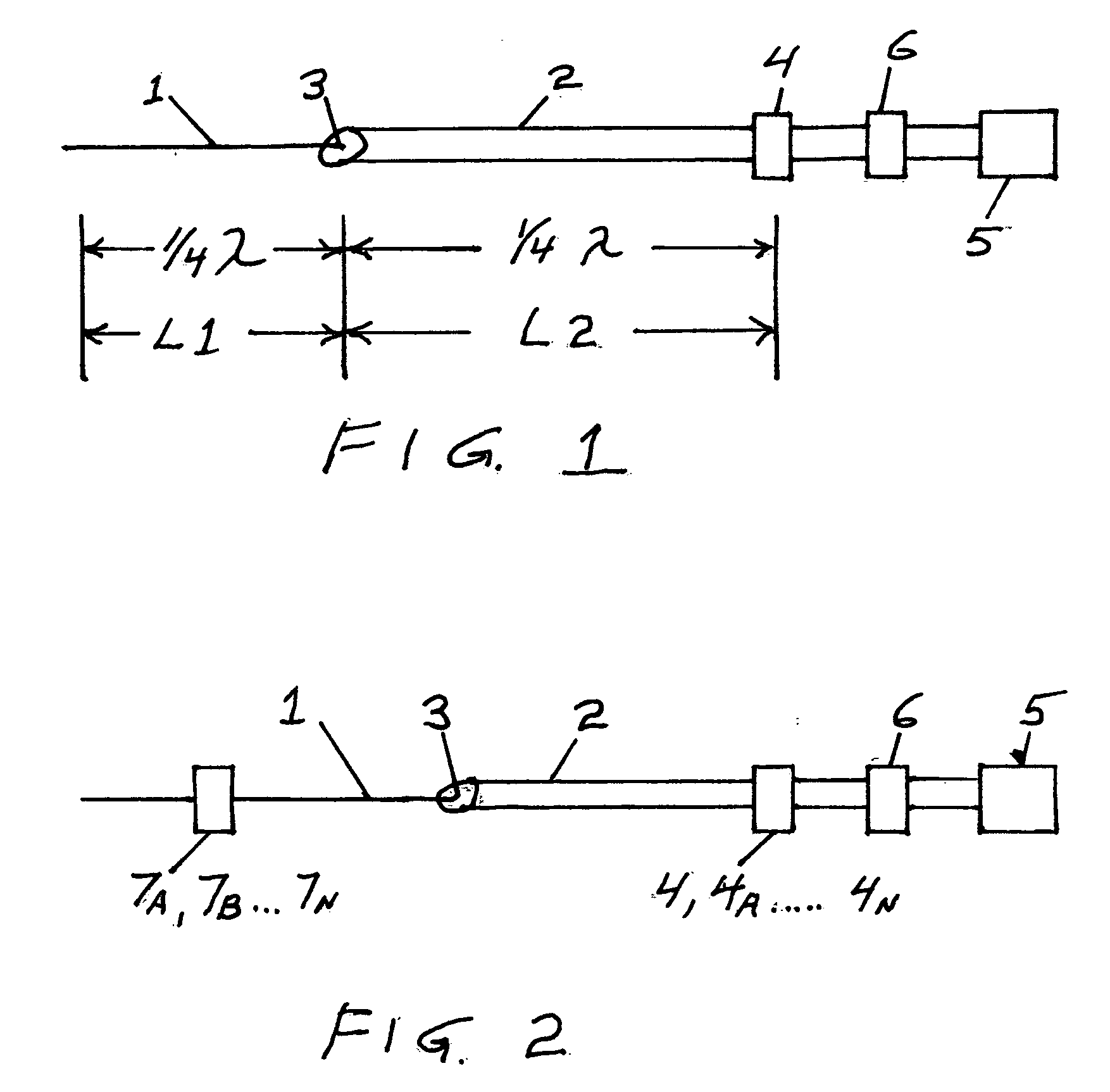Coaxial cable dipole antenna for high frequency applications
a dipole antenna and coaxial cable technology, applied in the direction of antennas, antenna details, antenna feed intermediates, etc., can solve the problems of difficult maintenance, difficult to properly install, difficult to maintain, etc., and achieve the effect of high frequency (hf) and small siz
- Summary
- Abstract
- Description
- Claims
- Application Information
AI Technical Summary
Benefits of technology
Problems solved by technology
Method used
Image
Examples
Embodiment Construction
[0017]Referring to FIG. 1, the simplest embodiment of this invention will be used to help explain the invention concept. This embodiment would be a single band coaxial cable dipole antenna for the HF band. It consists of a quarter wavelength wire antenna element 1 connected to the center conductor of the coaxial cable 2. This connection forms the feed point 3 of the dipole antenna. A parallel resonant circuit 4 is placed a quarter wavelength from the feed point 3 along the coaxial cable 2. This parallel resonant circuit defines the electrical length of L2 by presenting high impedance at the resonant frequency and allowing a voltage node to form. An RF choke 6 made of ferrite sleeves is slid over the end of the coaxial cable 2, and the coaxial cable is then connected, to the radio wave circuit 5. The RF choke 6 reduces any chance of stray RF currents from flowing across the coaxial cable.
[0018]Referring to FIG. 1, it should be noted that at radio frequencies the outside surface of th...
PUM
 Login to View More
Login to View More Abstract
Description
Claims
Application Information
 Login to View More
Login to View More - R&D
- Intellectual Property
- Life Sciences
- Materials
- Tech Scout
- Unparalleled Data Quality
- Higher Quality Content
- 60% Fewer Hallucinations
Browse by: Latest US Patents, China's latest patents, Technical Efficacy Thesaurus, Application Domain, Technology Topic, Popular Technical Reports.
© 2025 PatSnap. All rights reserved.Legal|Privacy policy|Modern Slavery Act Transparency Statement|Sitemap|About US| Contact US: help@patsnap.com



